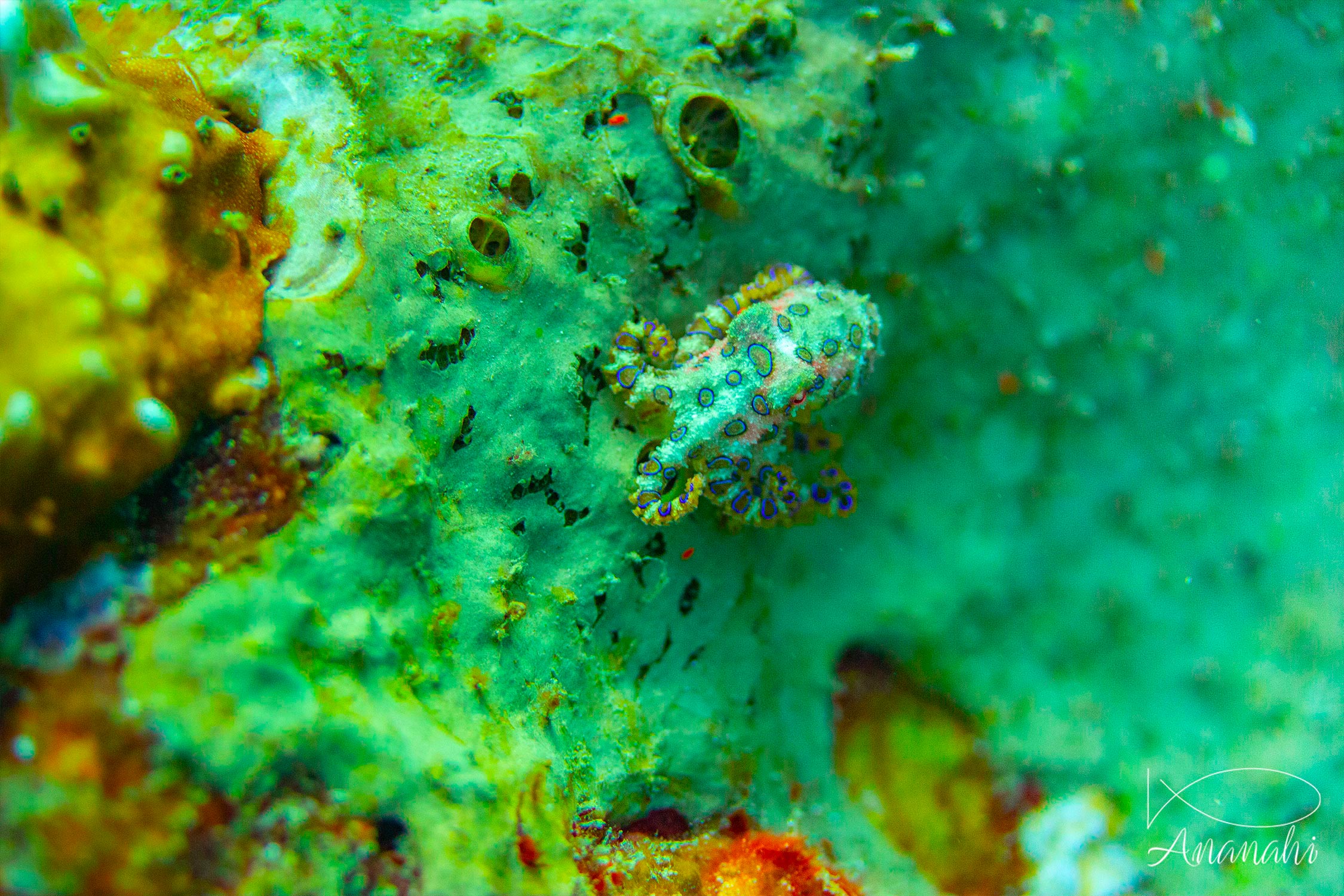
Scientific name: Hapalochlaena maculosa
Size: Between 4 and 5.9 inches
Color: Beige and blue
Distinguishing feature: Small, and has blue rings all over the body
Where did we see it: Raja Ampat

Scientific name: Hapalochlaena maculosa
Size: Between 4 and 5.9 inches
Color: Beige and blue
Distinguishing feature: Small, and has blue rings all over the body
Where did we see it: Raja Ampat
This octopus can be found in Asia, it's not very easy to see because it's quite small.
This octopus is also one of the most dangerous underwater species. Its ink if it touches its target can cause cardiac arrest, which can easily cause death if one is a few meters underwater.
But don't panic, the rings become a lot darker and bigger to prevent him from getting annoyed.
Mammals have a horizontal tail.
Fishes have a vertical fin.
Turtles are in economy mode when they are sleeping. If they are woken during night, they may not have enough air to return to surface.
So, please be careful during night dives!
The whale shark is the largest fish in the world!
Some whales are larger, but they are mammals, not fish!